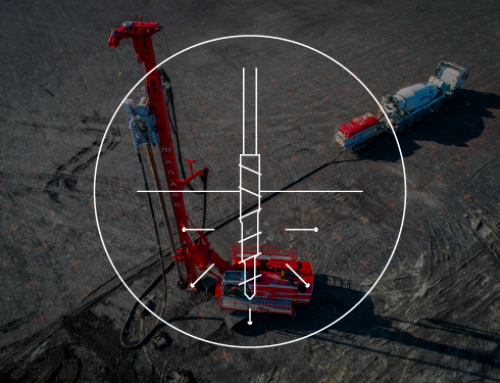Soil Mixing is a ground improvement technique that reinforces the soil by mixing in situ a network of grout and soil columns.

Presentation and key elements
What is Soil Mixing and why do we use it?
Soil Mixing is a ground improvement technique. It is used for a wide variety of applications: controlling and reducing settlement under structures, increasing the bearing capacity of the soil, ensuring stability, reducing liquefaction risk, mass stabilization, reducing earth pressure behind retaining structures, block ground water, increasing lateral reaction around foundation piles, etc.
Basic principle of Soil Mixing
Soil mixing consists of using specially designed augers or special tools to mechanically mix the soil with an in-situ binder. The process simultaneously breaks up the soil without removing it, injects a binder at low pressure and thoroughly mixes the binder with the soil to form a reinforced block of soil after treatment.
Depending on the overall design and soil conditions, several methods of treatment have been developed (block-type, wall-type, cellular-type, isolated columns) making Soil Mixing a very flexible technique.
Execution of Soil Mixing
The Soil Mixing machine is fitted with single or multiple mixing tools (auger, blades, rotary head) to directly inject binder into the mixing zones. The stabilisation agent is combined with the soil to be treated and robustly mixed by the mixing blades. Binder dosage and mixing parameters are adopted accordingly as a function of soil strength and specifications to be achieved.





